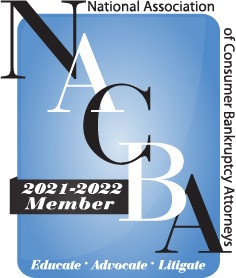Asset Protection and Bankruptcy: Pigs Get Fat But Hogs Get Slaughtered
I’m going to focus this discussion on Chapter 7 “fresh start” bankruptcy – also sometimes referred to as a “straight liquidation.” I want to dive right into the belly of the beast so to speak, so if you don’t understand the basic concepts of “fresh start” and “liquidation” or the different types of bankruptcy, don’t be bashful. Reach out to me with a panic-stricken text message to 561.843.5352 that says “I NEED HELP!” That will certainly get my attention.
YOU: You’re sharp. Intelligent. A good thinker. And a pretty good businessperson. Unfortunately, you, like many others, have fallen on hard times due to the depressed economy.
You’re hemorrhaging cash every month, possibly borrowing from Peter to pay Paul. You’re not in steerage, but you’re not in first-class either. Any which way, it doesn’t matter, because you’re still on the Titanic, and you know it’s only a matter of time.
And so you try to think ten steps ahead. To do what any good businessperson ought to do – to plan for the future. And therein lies the problem.
Many states have what’s called an “anti-fraud” statute. The language is usually similar to that found in the bankruptcy code at 11 U.S.C. § 727, which basically says, if you transfer property within one year of your bankruptcy filing, and you do it with “intent to hinder, delay or defraud a creditor” (or the trustee), for one, the bankruptcy court can “unravel” or reverse your transaction (i.e., recover the property), and at worst, the court can throw your case out of bankruptcy court.
Now, you’re probably wondering, what in the world does “intent to hinder, delay or defraud a creditor” really mean? I’m going to be honest with you. I don’t know. And frankly, neither do the courts.
Pigs Get Fat, But Hogs Get Slaughtered
What makes construing the law particularly difficult is that most courts say that a modest and reasonable amount of “pre-bankruptcy planning,” or “exemption planning” is okay. Yet other courts find this behavior unacceptable.
The analysis of those courts that permit exemption planning seems to be based on the maxim, “pigs get fat, but hogs get slaughtered.” And most courts agree that they know a hog when they see one. The difficulty, however, is trying to identify the pig.
The courts will tell you that the intent to “hinder, delay or defraud” a creditor must be an actual intent as opposed to a constructive intent. However, this is really just a term of art. Any way you slice it, the court is going to find “actual intent” based on the circumstances of the transfer. Most courts will look to what they call “badges of fraud” to make a determination if you did a transfer with an actual intent to “hinder delay or defraud.”
Common badges of fraud
- Your transfer was to an “insider” (i.e., a close relative, friend or someone who has the power to influence your decision-making).
- You retained possession or control of the property transferred, after you made the actual transfer.
- Your transfer or obligation was concealed from the court.
- Before you made your transfer or before your new obligation was incurred, you were sued or you were threatened with suit.
- Your transfer was of substantially all of the your assets.
- You fled the jurisdiction after your transfer.
- You removed or concealed assets from the court.
- The value of what you received for your transfer was less than a reasonably equivalent value.
- You were insolvent or became insolvent shortly after your transfer was made or your obligation was incurred.
- Your transfer occurred shortly before or shortly after you incurred a substantial debt.
- You transferred the essential assets of your business to a lienor (an alleged business creditor of your company) who then turns around and transfers the assets to an insider of your business.
Now sure enough, if you answered “yes” to all of the above “badges,” your transfer will trigger the anti-fraud statutes. But, what if you answered yes to some, but not all of the above badges? That’s where the analysis can get really sticky.
And some jurisdictions will weigh these badges differently. In other words, the badges that seem more intrinsically “evil” will be afforded greater weight. Such as, “concealment” from the court (#7 above); or incurring new debt to fund an exempt asset (#10 above); or retaining control over an asset after the transfer – a form of deception (#2 above).
Interestingly, consultation with a bankruptcy attorney has not been labeled an outright badge of fraud, but your mileage on the consultation will vary, depending on which jurisdiction you file your case in.
There are some cases that say that engaging in these transfers after consulting with an attorney (particularly a bankruptcy attorney) is another factor the court can consider as to whether your transfer was with actual intent to hinder, delay or defraud a creditor.
It’s quite a quagmire for us bankruptcy attorneys. A delicate dance, if you will, between coldly advising clients of their rights and the consequences of filing a case under the client’s present circumstances, or more directly telling a client outright what he or she should do with his/her assets in order to “maximize” the use of the client’s exemptions (i.e., the laws that protect the particular asset).
In some jurisdictions, it can be considered a malpractice to not appropriately advise your client as to the exemptions he or she may avail of, or to not advise your client how to maximize his or her exemptions. And yet, in other jurisdictions, this kind of advice can apparently get the client (and possibly the lawyer) into a whole lot of trouble, if viewed as evidence of intent to hinder, delay or defraud. (Can you say “conspiracy to commit fraud???”). Lawyer and Client. Caught between the proverbial rock and hard place!
So the best advice to maximize your use of bankruptcy exemptions? Don’t wait for rain before you purchase your umbrella. Get it while the sun is still shining.
Trigger as few badges of fraud as possible and put as much time in between whatever it is you are doing, and the ultimate filing of your bankruptcy case.
Article Source: http://EzineArticles.com/5381331



